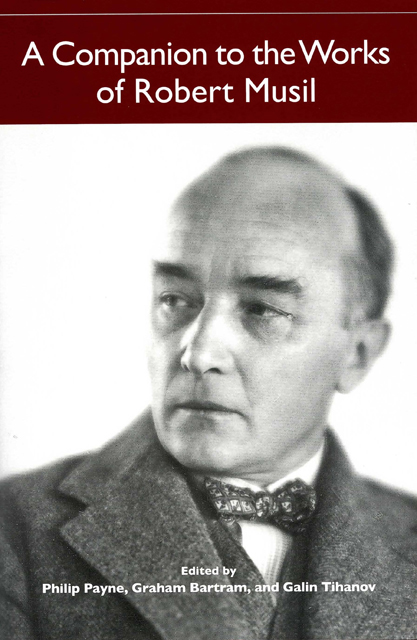Book contents
- Frontmatter
- Dedication
- Contents
- Preface
- Acknowledgments
- List of Abbreviations
- Musil's Principal Works
- Miscellaneous Frontmatter
- Introduction The Symbiosis of Robert Musil's Life and Works
- Musil's Life: Experiences, Reflections, Emotions of an Intellectual
- Literary Works before Der Mann ohne Eigenschaften
- Perspectives on Der Mann ohne Eigenschaften
- Select Bibliography
- Robert Musil's Life: A Chronology
- Notes on the Contributors
- Index
12 - Der Mann ohne Eigenschaften: Unfinished or without End?
Published online by Cambridge University Press: 15 March 2023
- Frontmatter
- Dedication
- Contents
- Preface
- Acknowledgments
- List of Abbreviations
- Musil's Principal Works
- Miscellaneous Frontmatter
- Introduction The Symbiosis of Robert Musil's Life and Works
- Musil's Life: Experiences, Reflections, Emotions of an Intellectual
- Literary Works before Der Mann ohne Eigenschaften
- Perspectives on Der Mann ohne Eigenschaften
- Select Bibliography
- Robert Musil's Life: A Chronology
- Notes on the Contributors
- Index
Summary
Der Mann Ohne Eigenschaften is a notorious case of a novel that was never finished. Why this was so is a problem that, while interesting in itself, needs to be put in broader perspective. As an art form the novel developed certain conventions beginning in the eighteenth century, including conventions of ending. Novels purported to be a picture, reflection or refraction of life, however “life” may have been defined, and their openings set scene, character, and situation. But how to end the ongoing dynamics of life that novels set in motion has always been a vexing problem for writers. This is especially true of modernist and post-modern novels that do not rely on plot. Almost universal for novels old and new has been the author's need to close the processes the novel has opened by a conclusion that, like the frame around a painting, will remind the reader that the novel is a form of art rather than of life. Endings of traditional narratives involved such convenient devices as marriage, death, and reconciliation. Concluding many of the greatest twentieth-century novels presented enormous difficulties to their writers.
Frank Kermode traces the desire to provide a conclusion toward which the novel moves back to the religious notion of apocalypse, the end of time in a final judgment. But Musil (whom Kermode discusses) had a different aim, to present in his novel problems of modern life as challenges to the reader that are to be solved beyond the novel, in life rather than in art. The characters in Der Mann ohne Eigenschaften conspicuously fail to solve the ethical problems raised in the novel, as they must, since the ethical burden is placed not on them but on the reader. The novel opens in August 1913, and Ulrich, its central character, has decided to take a year off from life to consider his future. The looming outbreak of the First World War hovers over Der Mann ohne Eigenschaften as the ghost of Hamlet's father hovers over Hamlet, but the war's outbreak is endlessly deferred.
- Type
- Chapter
- Information
- A Companion to the Works of Robert Musil , pp. 355 - 370Publisher: Boydell & BrewerPrint publication year: 2010



